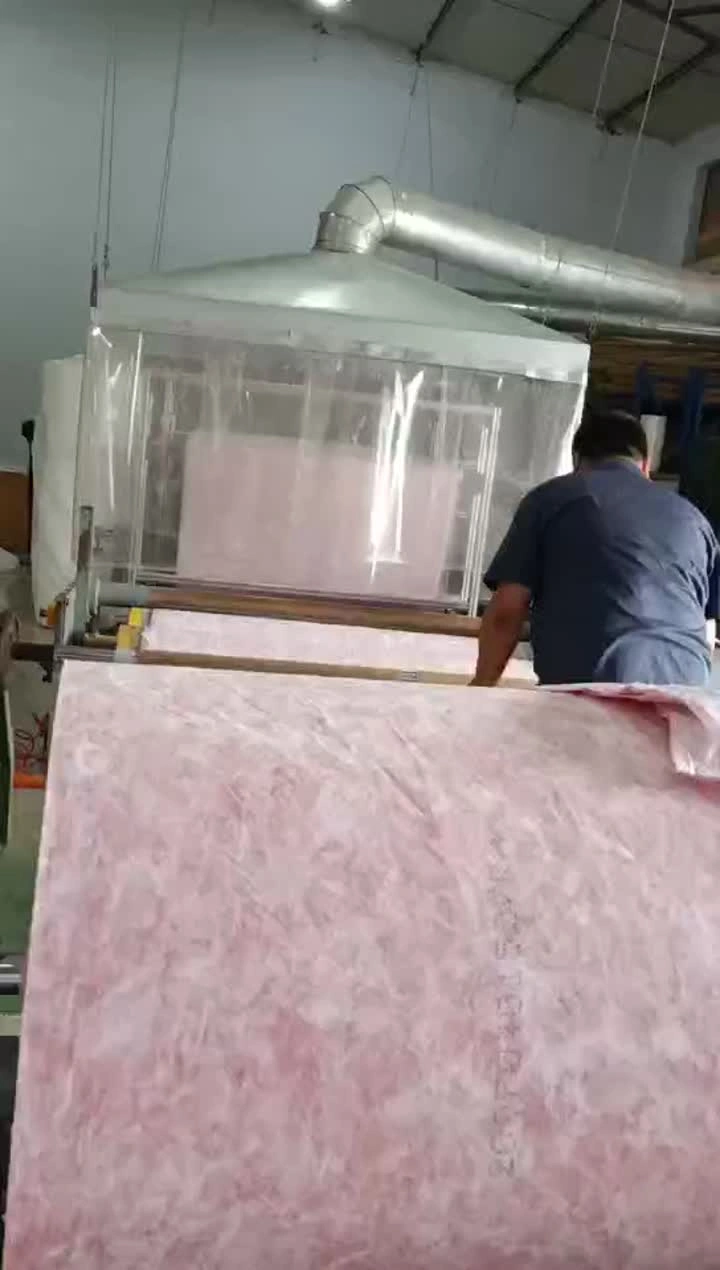
(synthetic air filter media)
Synthetic air filter media have become integral components in global filtration applications, ranging from HVAC to industrial clean room facilities. The evolution from traditional cellulose and fiberglass media toward synthetic alternatives is fueled by the demand for higher performance, durability, and cost-effectiveness. According to a 2023 International Filtration Association report, the global market for synthetic air filter media
rolls alone is projected to surpass $3.8 billion by 2026, with a compound annual growth rate (CAGR) of 7.1%. This growth is driven by increasingly stringent air quality regulations, especially in regions like North America, Europe, and rapidly industrializing parts of Asia. Nonwoven synthetic filter media, characterized by their adaptable fiber structures and scalable manufacturing, are also achieving greater adoption figures. The expanding range of filter efficiencies, from G2 prefilters to F9 fine filters (per EN779 standards), positions these media as a first-choice solution in environments where air purity is non-negotiable.
The backbone of modern synthetic air filter media is its nonwoven matrix, typically constructed from polyester, polypropylene, or polyethylene terephthalate (PET) fibers. These fibers are engineered for specific filtration and mechanical properties, such as fiber diameter (ranging from 1.7 to 7 μm, depending on the application), basis weight, loft, and porosity. Multi-layered structures are now common, combining layers of different fiber sizes or incorporating meltblown and spunbond technologies to maximize fine particle capture while maintaining low airflow resistance.
The following table summarizes the comparative data for standard synthetic vs. traditional filter media:
| Property | Synthetic Media (Nonwoven) | Cellulose Media | Fiberglass Media |
|---|---|---|---|
| Minimum Particle Efficiency (% @ 0.3μm) | 77-99 (varies by grade) | 60-85 | 86-98 |
| Initial Pressure Drop (Pa) | 30-65 | 40-80 | 60-100 |
| Moisture Resistance | Excellent | Poor | Good |
| Bacterial Growth Resistance | High (non-nutritive) | Low | Moderate |
| Reusable (Washable) | Yes (selected grades) | No | No |
| Production Cost (per m²) | $1.2–$1.6 | $1–$1.3 | $1.8–$2.2 |
| Lifespan (Operating Hours) | 3500–6000 | 1200–2200 | 2500–4500 |
With up to 50% longer lifespan and superior water resistance, synthetic options have outpaced traditional media in value and sustainability. A recent laboratory experiment demonstrated that synthetic media can maintain over 95% of airflow performance after 3,000 hours of continuous use, compared to a 65% retention for cellulose-based alternatives.
The global landscape of synthetic air filter media production is shaped by several key players who invest heavily in research and development. Companies such as Freudenberg Filtration Technologies, Hollingsworth & Vose, Lydall, and Ahlstrom have set benchmarks for filter efficiency, sustainability, and technical support.
The following table offers a performance and feature comparison among these manufacturers:
| Manufacturer | Media Grades | Standard Efficiency (F7–F9) | Custom Roll Widths | Green Technologies | Warranty/Support |
|---|---|---|---|---|---|
| Freudenberg | Polyester, Hybrid, Antimicrobial | Yes (up to 99.2%) | Varies (300mm–2000mm) | Bio-based fiber blends | 3 years Documentation included |
| Hollingsworth & Vose | Pure Synthetic, Meltblown, Composite | Yes (97–99%) | 500mm–2200mm | Low-emission process | 2 years On-site technical |
| Lydall | Spunbond, Meltblown | Yes (96–98.8%) | 600mm–1800mm | Recycled fiber, solvent-free | 2 years Remote support |
| Ahlstrom | Synthetic, Glass Fiber mix | Yes (95.5–98%) | 400mm–1600mm | Energy-saving lines | 2 years Documentation included |
The consistent theme across the industry is adaptability: manufacturers offer synthetic air filter media rolls in custom widths and thicknesses, utilizing advanced green manufacturing techniques such as bio-based polymers and solvent-free processing. The best performers demonstrate a balance between high pollutant removal efficiency and sustainable production values.
One of the most powerful aspects of nonwoven synthetic filter media is the capacity for customization. Manufacturers adapt fiber blends, loft, grammage, calendering, and roll dimensions to address sector-specific regulations and operational requirements. For example, food processing facilities often require antimicrobial coatings and compliance with NSF/ANSI standards, whereas pharmaceutical and microelectronics manufacturers demand extremely fine filtration, down to MERV 16 or higher.
Detailed custom solutions may involve:
The practical value of synthetic air filter media is best illustrated through real-world deployments. For instance, a European automotive paint shop replaced glass fiber prefilters with meltblown synthetic alternatives. Results included a 40% reduction in annual filter replacement costs and improved particulate removal from 90% to 98.2% in the critical paint booth zones, directly reducing warranty claims related to paint defects.
In another example, a hospital group in Southeast Asia upgraded all HVAC system filters to nonwoven synthetic filter media. The system’s after-upgrade air quality measured an average PM2.5 level of 7.5 μg/m³ (down from 15.8 μg/m³), and the maintenance cycle extended from 4 to 10 months, yielding labor savings estimated at 28% per year.
These use cases underscore the transformative impact that high-quality synthetic filter options have across verticals—delivering efficiency, compliance, and operational savings.
From a performance perspective, synthetic air filter media distinguishes itself through long service life, minimal airflow obstruction, and robust resistance to moisture and microbial degradation. As a result, synthetic fibers are compatible with both central HVAC units and distributed ventilation systems even in harsh industrial conditions. Furthermore, the industry’s move toward recycled and bio-based polymers enhances the environmental profile of synthetic solutions.
Nevertheless, high-end synthetic grades can present up-front cost premiums compared to the cheapest cellulose-based options. There is also an ongoing challenge to optimize electrostatic fiber enhancements to maintain efficiency as the media loads with dust. Some emerging studies suggest that microplastics released during end-of-life disposal may require additional environmental controls; as a result, circular economy solutions—such as take-back and recycling programs—are beginning to gain traction.
Keeping pace with evolving air quality standards (e.g., ASHRAE 52.2, ISO 16890) ensures that synthetic media manufacturers are continually innovating. Filters must be regularly tested for leakage, uniformity, and stability to guarantee reliable indoor air quality protection in sensitive venues like medical centers and research labs.
The trajectory of synthetic air filter media technologies signals a profound and lasting impact on global air quality management strategies. With their unmatched versatility, customizable characteristics, and sound environmental credentials, synthetic solutions are poised to remain at the forefront of clean air initiatives. Manufacturers and application engineers are working in concert to refine fiber chemistries, enhance process scalability, and embed reuse and recycling functionality at every stage of the product lifecycle. As regulatory demands tighten and end-user expectations rise, synthetic air filter media—and especially advanced nonwoven synthetic filter media—will serve as critical pillars in delivering safer, healthier environments everywhere.

(synthetic air filter media)
A: Synthetic air filter media is a material made from man-made fibers, often nonwoven, used for filtering air in HVAC systems or industrial settings. It efficiently captures dust and airborne particles. Its durability makes it suitable for various filtration applications.
A: Synthetic air filter media rolls offer easy handling and custom cutting for different sizes of filters. They provide consistent filtration performance and are resistant to moisture and chemicals. This makes them a cost-effective choice for large-scale operations.
A: Nonwoven synthetic filter media uses bonded synthetic fibers instead of natural materials like cotton. This provides higher strength, better airflow, and improved particle retention. Additionally, it is less likely to support microbial growth.
A: Synthetic air filter media is commonly used in HVAC systems, automotive filters, and industrial air purification. It's also found in cleanrooms and paint spray booths. Its versatility makes it suitable for multiple environments requiring clean air.
A: Yes, synthetic air filter media is available in various thicknesses, densities, and roll lengths to meet specific requirements. Manufacturers can tailor the media for different particle sizes and airflow needs. This ensures optimal performance for diverse applications.
Thickness:0.2-6 mm or Customized
Strand Thickness:0.5-8mm
Swd:2.5-100mm Lwd: 4.5-200mm
Surface Treatment:Powder Coated,Galvanized
MATERAL: PHENOLIC PAPER
MELT-BLOWN PBT
NON-WONEN LAMINATES
DIESEL FUEL FINE FILTERATION GRADE
APPLICATION : FUEL OIL WATER SEPERATION FILTER MEDIA
Material: Electrostatic cotton with activated carbon
PET/PP with Activated Carbon
Basic weight: 200-800g/m2
Application: Cabin Air Filters Panel Air Filters, Filter Cartridge, etc.
RAW MATERIAL: Polypropylene
PROCESS TECHNOLOGY: Melt-blown non-woven
RANGE OF EFFICIENCY: M5 ~ H11
Email to this supplier

